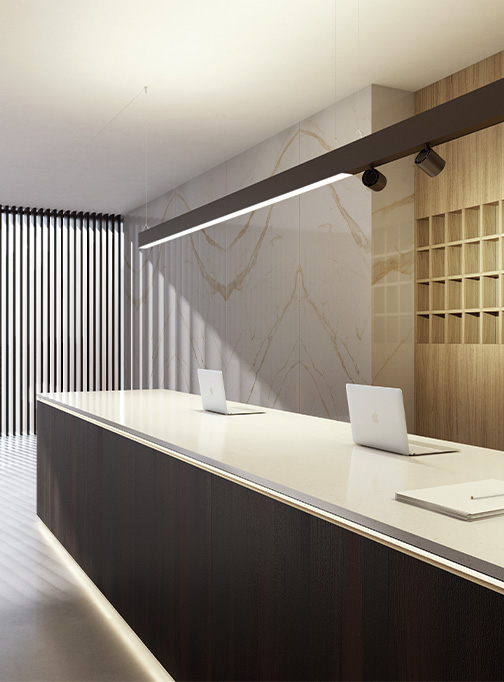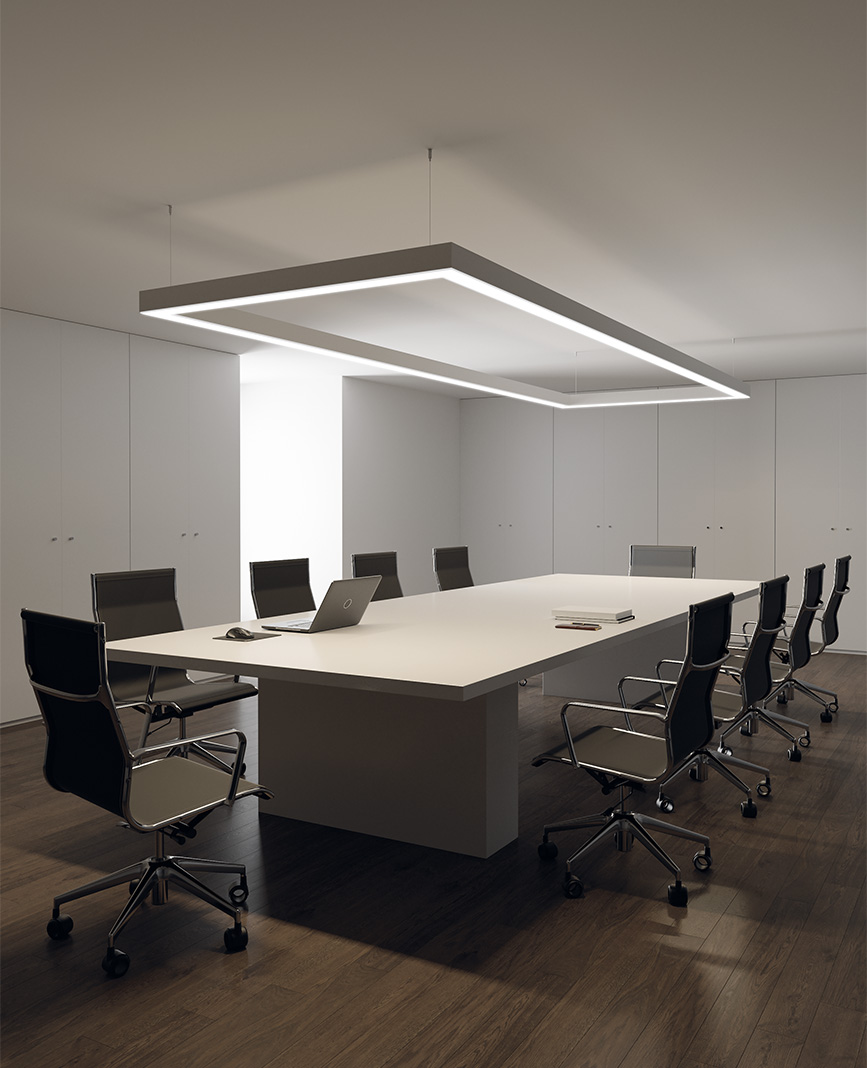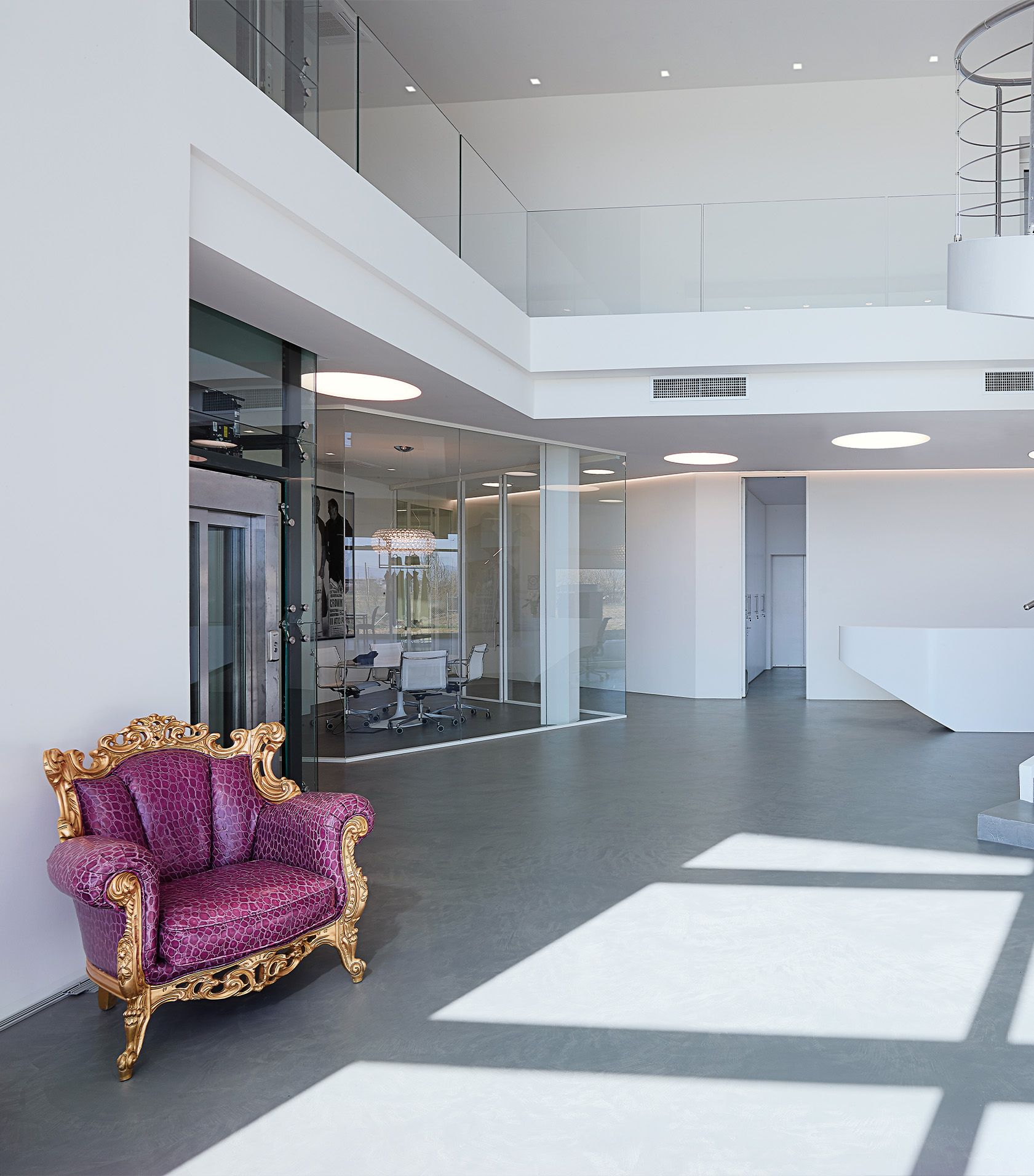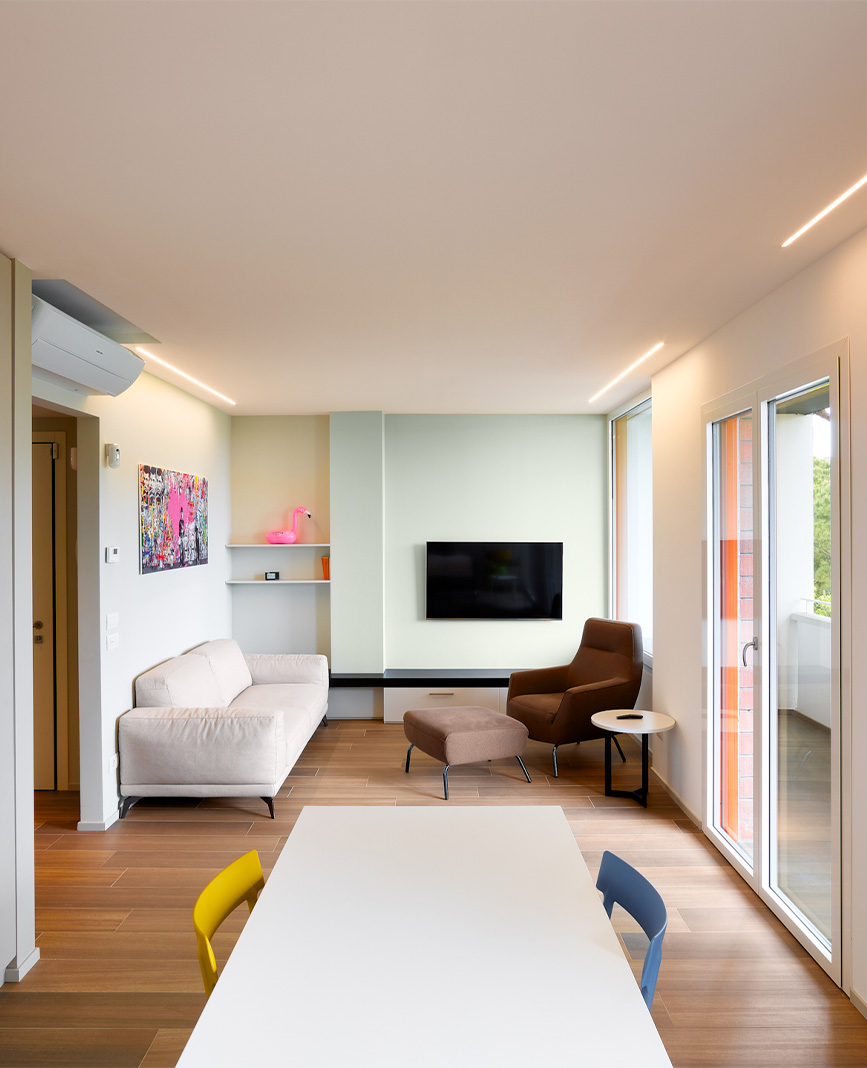Visual comfort: what is it and why is it important?
What is Visual Comfort?
Visual comfort is determined by a well-balanced lighting environment, the result of careful glare control choices, thanks to an adequate lighting level, the right distribution and direction of lights and a good colour rendering of light sources.
The main goal of architects, lighting designers and planners is to guarantee visual comfort and optimal lighting, creating a balance between design and functionality, aware of the influence that lighting has on people's well-being and the sensory perception of the environment. Light conveys information to the visual centres in the brain through the eye and influences the regulatory organs of the autonomic nervous system (ANS) and thus the functions of the body via a special branch of nerves. That’s why anexcellent light not only facilitates vision but also significantly increases physical well-being, thus the ability to concentrate and be productive.


Visual comfort in a lighting project
Visual comfort is achieved by adequate illuminance levels, the right distribution of luminance, the proper direction of light and a good colour rendering of the sources and the areas.
Therefore, a good lighting project provides for a uniform and balanced illumination, to allow the eyes to distinguish between all elements without glaring and altering colour qualities, avoiding shadow areas or changes in light intensity, which can cause stress and visual fatigue. Other essential aspects are the right amount and best quality of light, forevery specific visual requirement (uniformity, reflections, shadows, contrast rendering).

80% of sensory impressions are optic in nature: they need light as a vehicle for information and well-being.

Planning visual comfort
Planning visual comfort requires considering a number of elements, including:
- Natural light
The view to the outside is important, because the interaction between outside and inside creates a state of mental well-being. Both too little and too much light can cause discomfort, so it is always necessary to assess the natural light potential of a room as a first step, making full use of the sunlight access points.
- Light distribution: illuminance and luminance
Light must be distributed evenly within rooms without creating disturbance, discomfort, glare or strong contrasts. It is useful to map the light distribution with instruments and calculate illuminance and luminance. This identifies contrasts and shows whether the light is evenly distributed.
- Light quantity and quality
The quantity of light and its distribution in space should be assessed: Illuminance must be measured at specific points, appropriate to the functions that the light is to perform in the room.
- Dimmable solutions
Dimmable luminaires allow to adjust the light output of the source according to day and time, the sunlight component or manual intervention, and are able to create the desired atmosphere at any time.